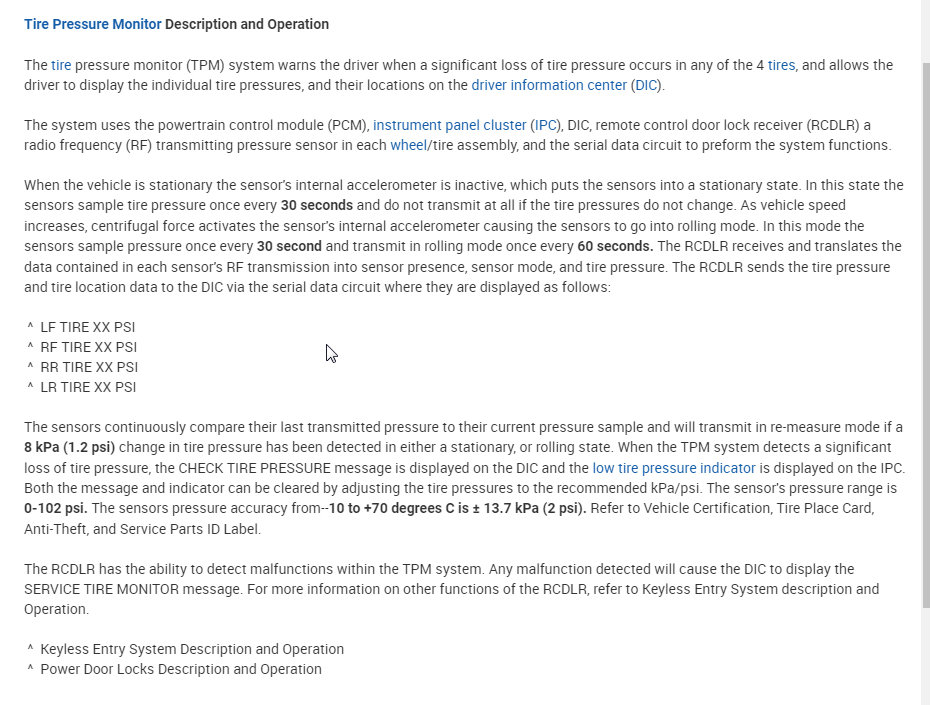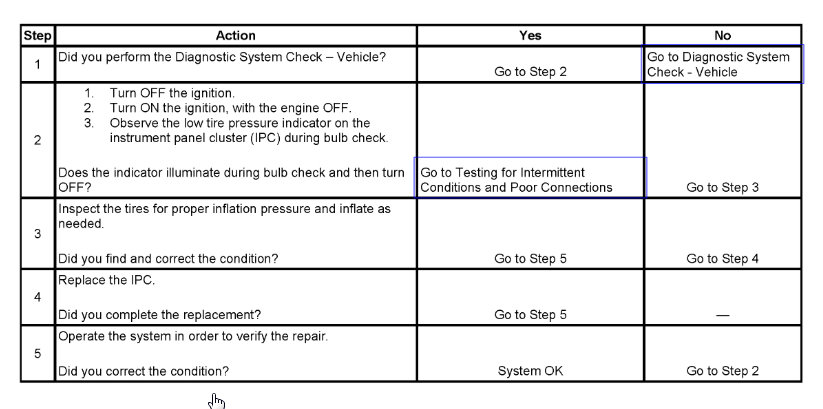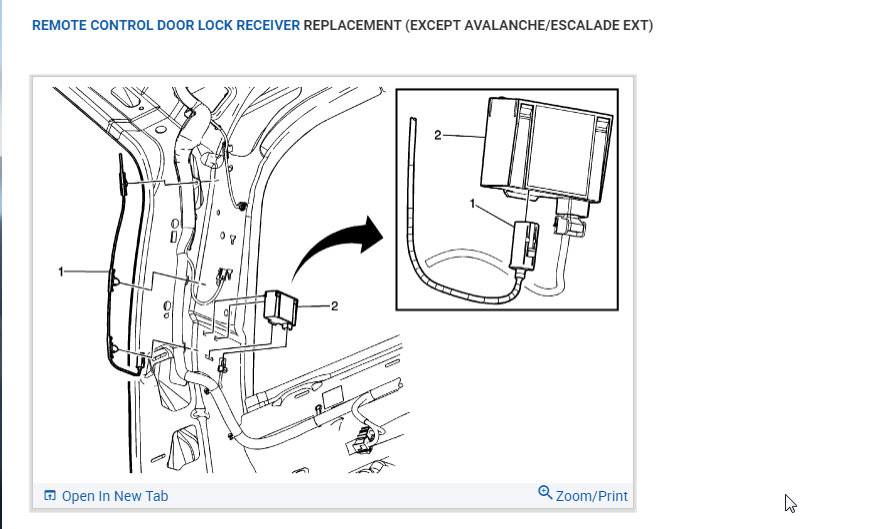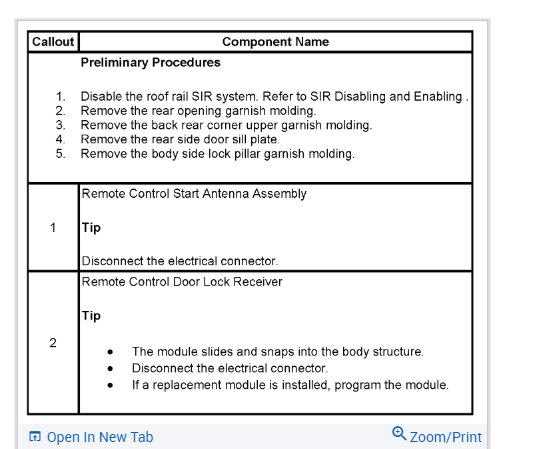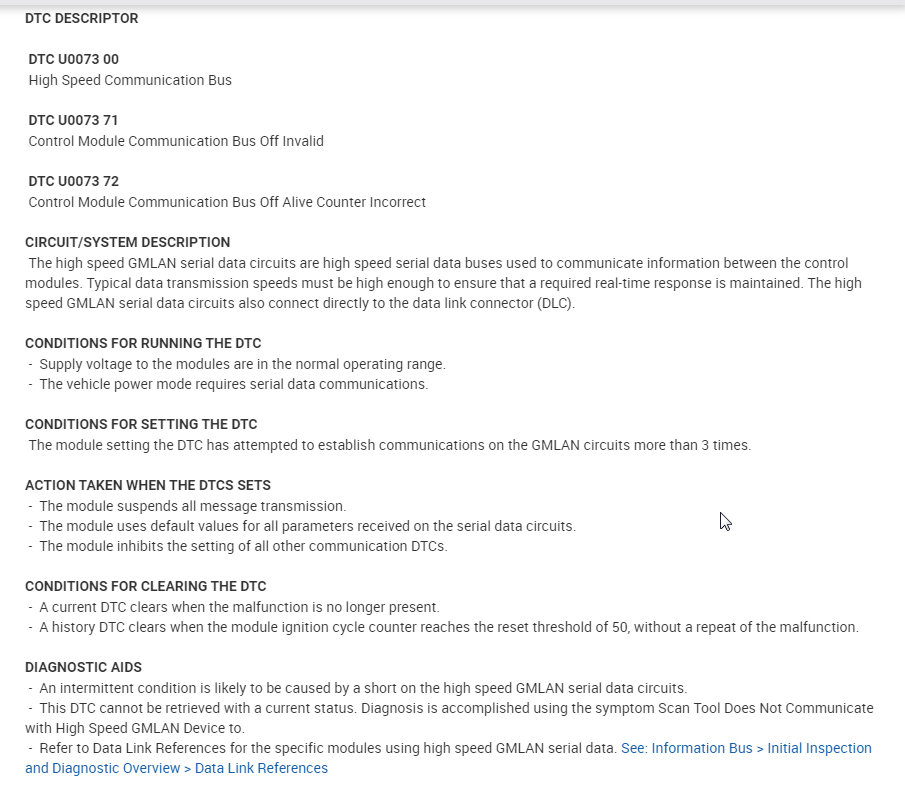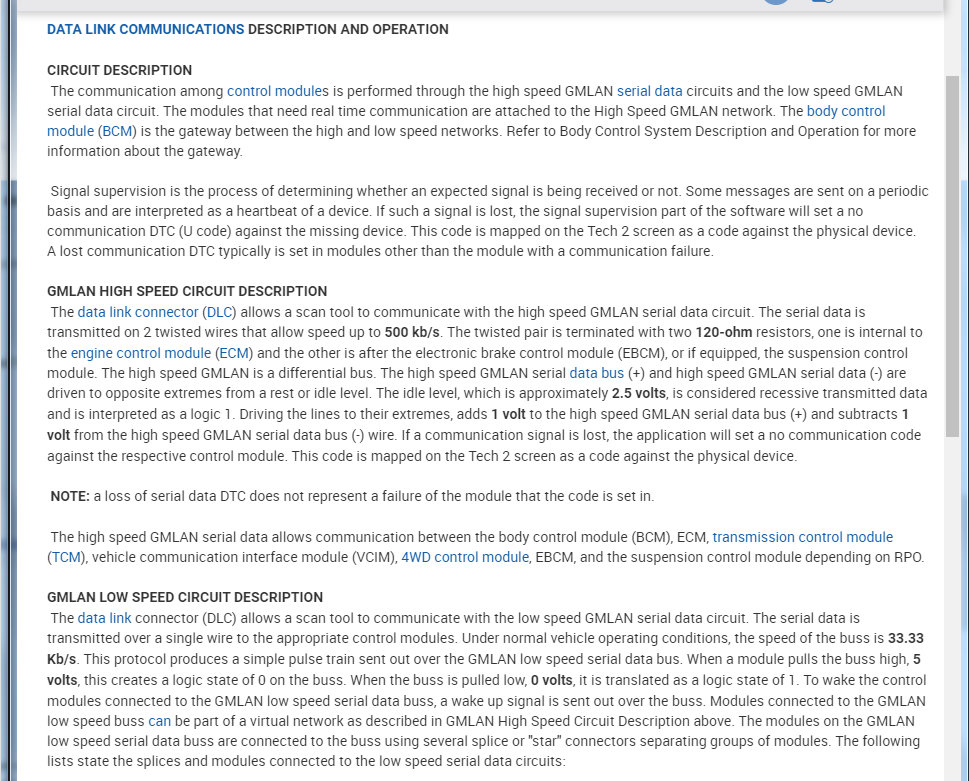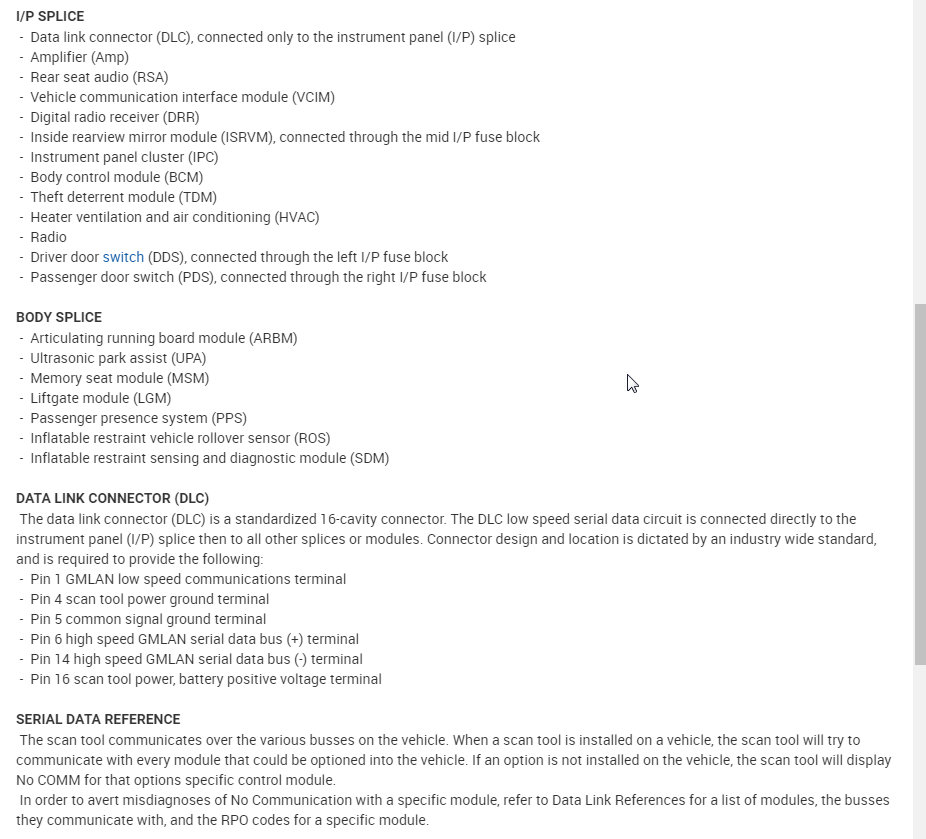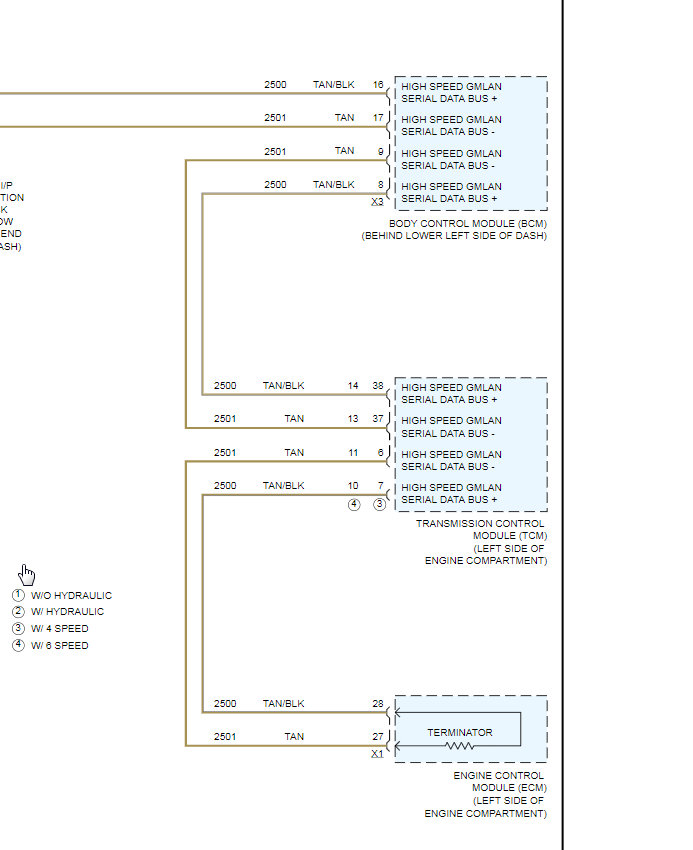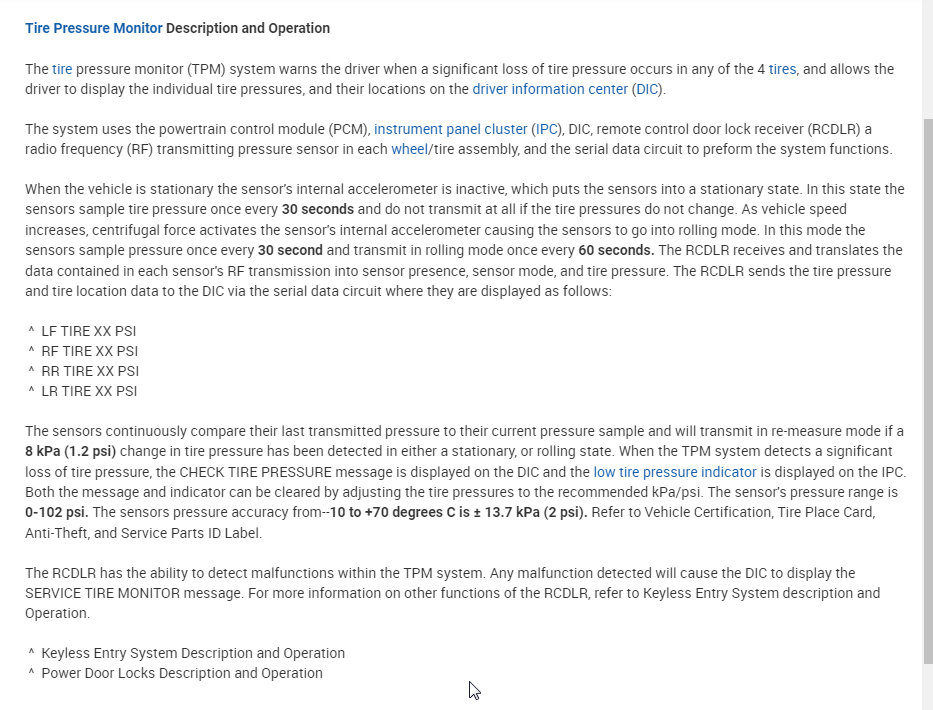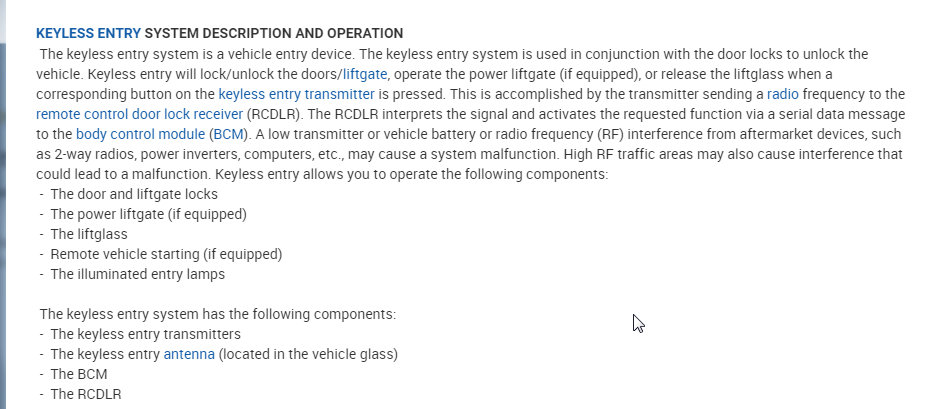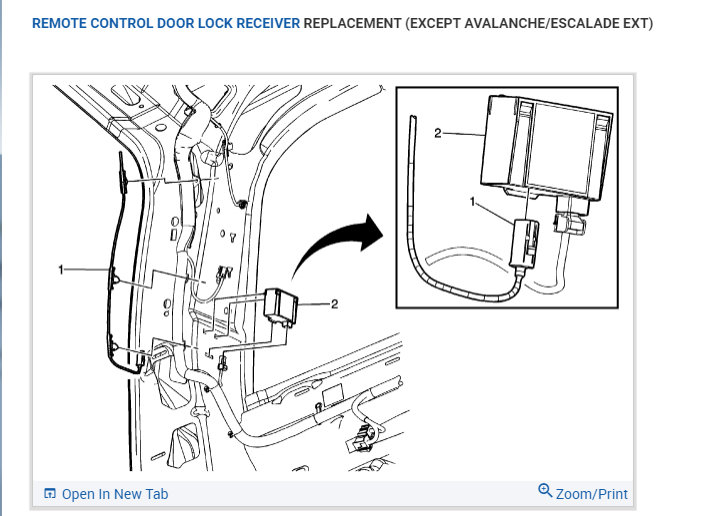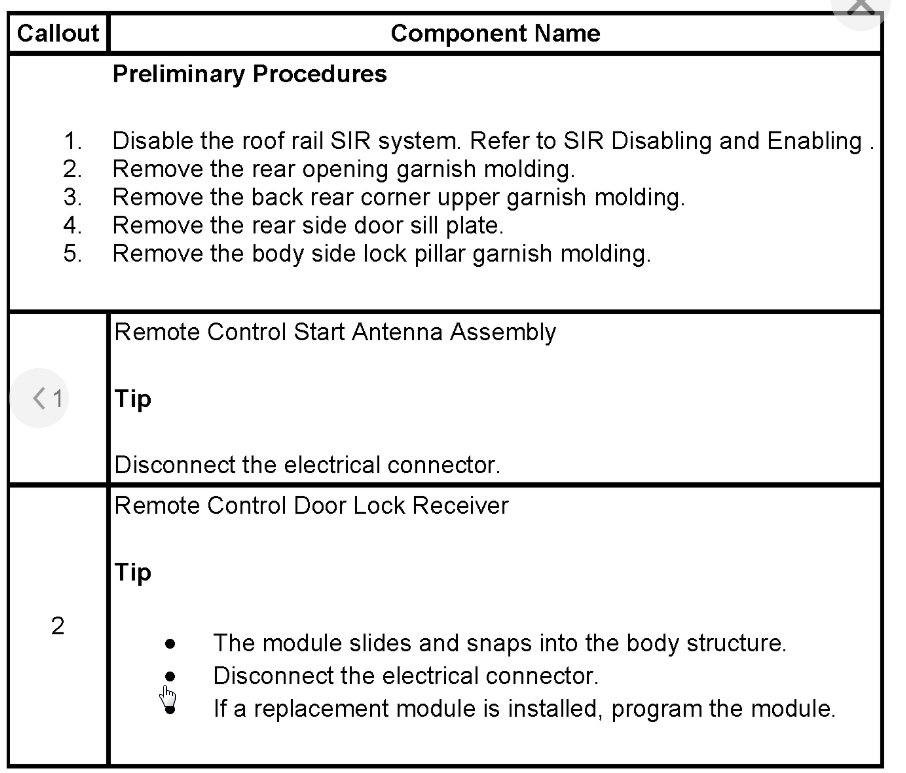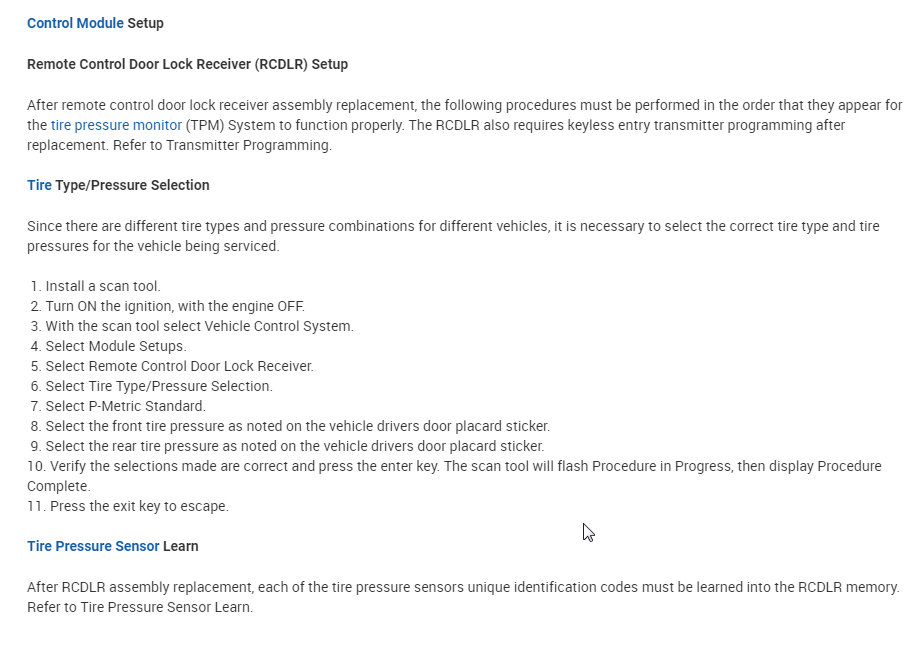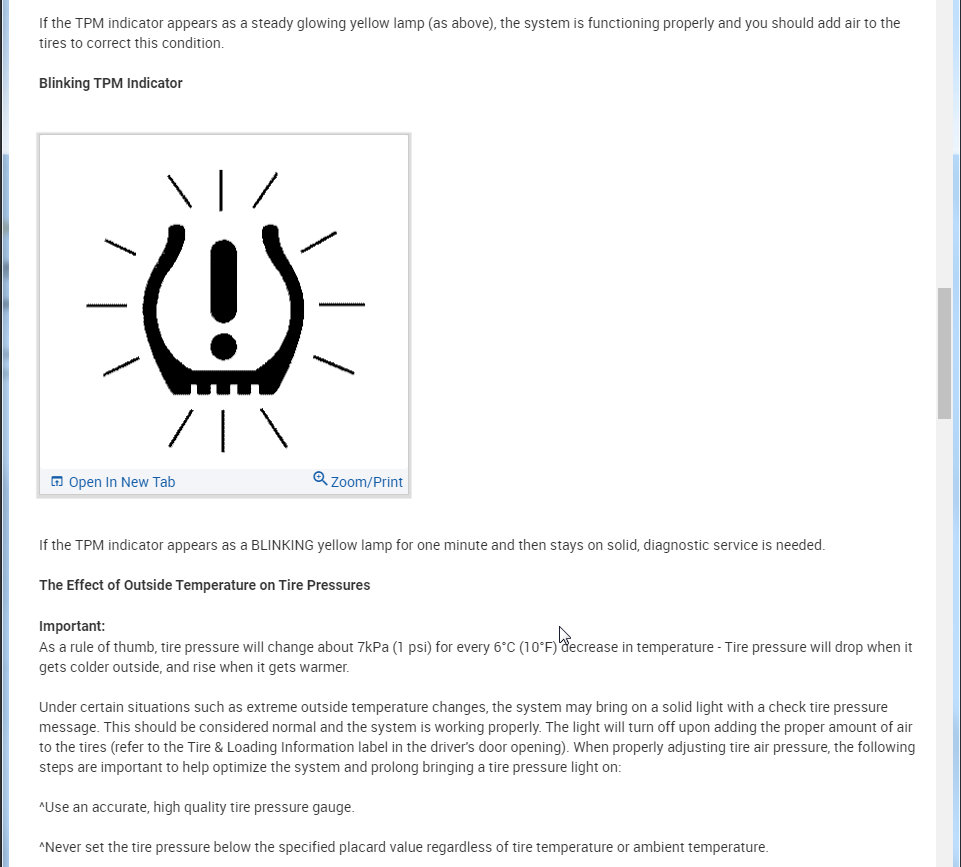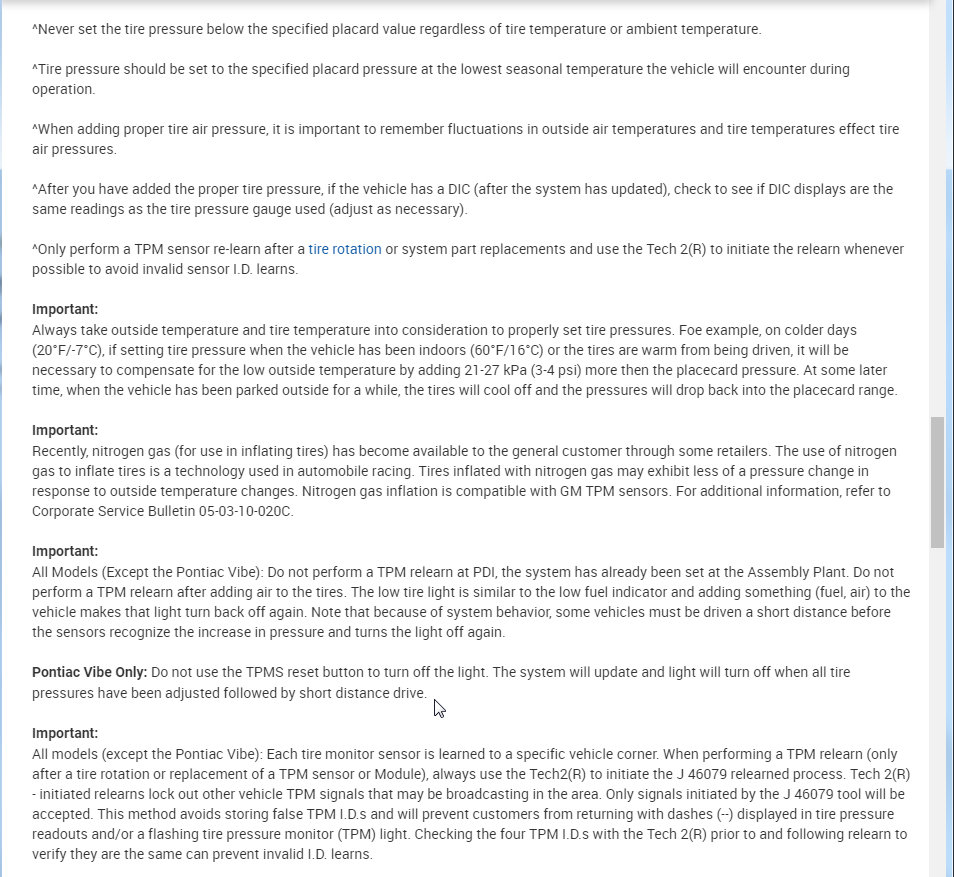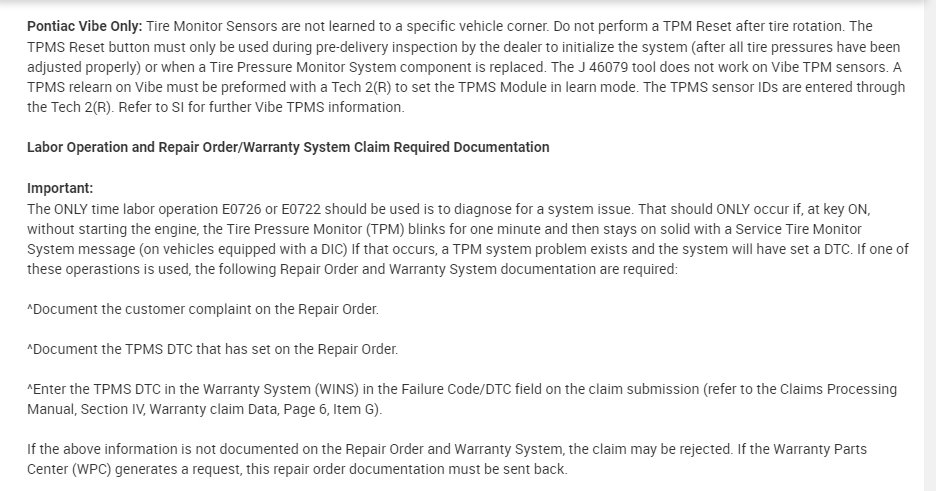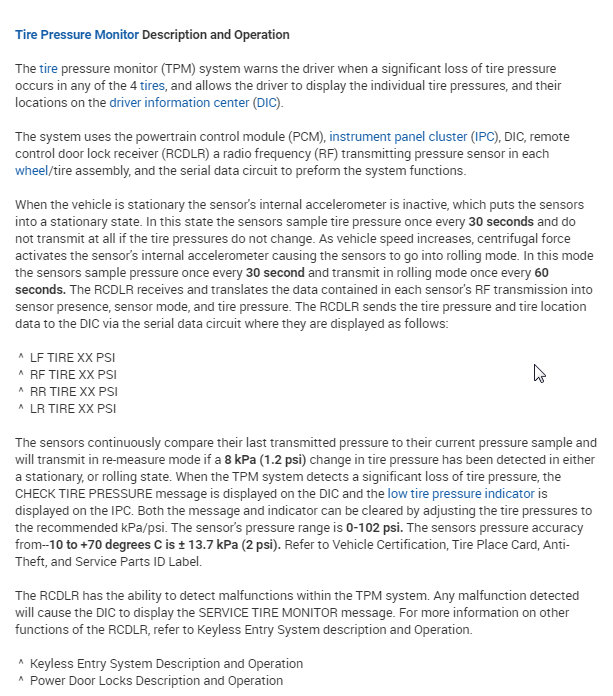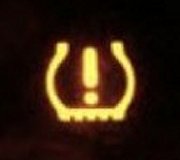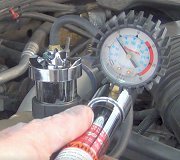There is a specific procedure that must be performed to have the CAN work with the sensors.
Tire Pressure Indicator Sensor Learn
Special Tools
- EL-46079/J-46079 Tire Pressure Monitor Diagnostic Tool
Learn Mode Description
The tire pressure monitor (TPM) system uses the instrument panel cluster (IPC), body control module (BCM), remote control door lock receiver (RCDLR), keyless entry transmitter, 4 radio frequency transmitting pressure sensors, and the serial data circuit to perform the TPM learn mode functions. The sensor learn procedure must be performed after every tire rotation, RCDLR replacement, or sensor replacement. Once the learn mode has been enabled, each of the sensors unique identification codes can be learned into the RCDLR memory. When a sensor ID has been learned, the RCDLR sends a serial data message to the BCM to sound a horn chirp. This verifies the sensor has transmitted its ID and the RCDLR has received and learned it. The RCDLR must learn the sensor IDs in the proper sequence to determine correct sensor location. The first learned ID is assigned to the left front location, the second to right front, the third to right rear and the fourth to left rear. The turn signals will individually illuminate indicating which location is to be learned in the proper sequence.
Sensor Functions Using J-46079
Each sensor has an internal low frequency coil. When the EL-46079/J-46079 is used in activate mode, it produces a low frequency transmission that activates the sensor. The sensor responds to a low frequency activation by transmitting in learn mode. When the RCDLR receives a learn mode transmission while in TPM learn mode, it will assign that sensors ID to the location on the vehicle relative to the order in which it was learned.
Sensor Functions Using Pressure Increase/Decrease Method
Each sensor takes a pressure measurement sample once every 30 seconds while in stationary mode. If the tire pressure increases, or decreases by more than 8.3 kPa (1.2 psi) from the last pressure measurement, another measurement will occur immediately to verify the change in pressure. If a pressure change has indeed occurred, the sensor transmits in Learn mode. When the RCDLR receives a Learn mode transmission while in TPM learn mode, it will assign that sensor's ID to the location on the vehicle relative to the order in which it was learned.
Learn Mode Cancellation
The learn mode will cancel if the ignition is cycled to OFF or if more than 2 minutes has elapsed for any sensor that has not been learned. If the learn mode is cancelled before the first sensor is learned, the original sensor IDs will be maintained. If the learn mode is canceled after the first sensor is learned, the following will occur:
- All stored sensor IDs will be invalidated in the RCDLR memory.
- If equipped, the DIC will display dashes instead of tire pressures.
- DTC C0775 will be set.
These conditions will now require the learn procedure to be repeated for the system to function properly.
TPM Learn Procedure
Important: If using the scan tool to enable the learn mode, the EL-46079/J-46079 must be used to activate the sensors. When this preferred method is used, any stray sensor signals will not affect the learn procedure. In the event a particular sensor's information is displayed on the special tool upon activation but the horn does not chirp, it may be necessary to rotate the wheel valve stem to a different position due to the sensor signal is being blocked by another component. If using the keyless entry transmitter or DIC buttons to enable the learn mode, the EL-46079/J-46079 or Pressure Increase/Decrease Method may be used. Before proceeding with this method, ensure that no other learn procedure is being performed simultaneously or that tire pressures are not being adjusted on another TPM equipped vehicle within close proximity. Stray signals from other TPM equipped vehicles just driving by can be inadvertently learned. If any random horn chirps are heard from the vehicle while performing the learn procedure, most likely a stray sensor has been learned and the procedure will need to be cancelled and repeated. Under these circumstances, performing the TPM Learn Procedure away from other vehicles would be highly recommended. In the event a particular sensor activation does not cause the horn to chirp, it may be necessary to rotate the wheel valve stem to a different position due to the sensor signal is being blocked by another component.
Preferred Scan Tool Learn Enable Method
1. Using a scan tool, initiate the TPM Learn Mode. A double horn chirp will sound indicating the Learn Mode has been enabled. The left front turn signal will also be illuminated.
2. Starting with the left front tire, active the sensor by holding the antenna of the EL-46079/J-46079 aimed upward against the tire sidewall close to the wheel rim at the valve stem location. Press and release the Activate button and wait for a horn chirp. Once the horn chirp has sounded, the sensor information is learned and the turn signal in the next location to be learned will illuminate.
3. After the horn chirp has sounded and the right front turn signal is illuminated, repeat step 2 for the remaining 3 sensors in the following order:
3.1 Right front
3.2 Right rear
3.3 Left rear
4. When the left rear sensor has been learned and a double horn chirp has sounded, the learn process is complete and the RCDLR exits the learn mode.
5. Ignition OFF, adjust all tires to the recommended pressures. Refer to Vehicle Certification, Tire Placard, Anti-Theft, and Service Parts ID Label.
Alternate Keyless Entry Transmitter or DIC Learn Enable Method
1. Ignition ON, initiate the TPM Learn Mode using one of the following procedures:
- On vehicles equipped with keyless entry, simultaneously press the keyless entry transmitters lock and unlock buttons until a double horn chirp sounds indicating the Learn Mode has been enabled. The left front turn signal will also be illuminated.
- On vehicles not equipped with keyless entry, press and release the driver information center (DIC) INFO button until the TIRE LEARN message appears on the DIC display. Press and hold the SET/RESET button until a double horn chirp sounds indicating the Learn Mode has been enabled. The left front turn signal will also be illuminated.
2. Starting with the left front tire, learn the tire pressure using one of the following methods:
- Hold the antenna of the EL-46079/J-46079 aimed upward against the tire sidewall close to the wheel rim at the valve stem location. Press and release the activate button and wait for a horn chirp. Once the horn chirp has sounded, the sensor information is learned and the turn signal in the next location to be learned will illuminate.
Caution: Over inflating tires may cause personal injury or damage to the tires and wheels. When increasing tire pressure do not exceed the maximum inflation pressure as noted on the tire sidewall.
- Increase/decrease the tire pressure for 8 10 seconds then wait for a horn chirp. The horn chirp may occur before or up to 30 seconds after the 8 10 second pressure increase/decrease time period has been reached. Once the horn chirp has sounded, the sensor information is learned and the turn signal in the next location to be learned will illuminate.
3. After the horn chirp has sounded and the right front turn signal is illuminated, repeat step 2 for the remaining 3 sensors in the following order:
3.1 Right front
3.2 Right rear
3.3 Left rear
4. When the left rear sensor has been learned and a double horn chirp has sounded, the learn process is complete and the RCDLR exits the learn mode.
5. Ignition OFF, adjust all tires to the recommended pressures. Refer to Vehicle Certification, Tire Placard, Anti-Theft, and Service Parts ID Label.
Also you can see whats going if with a simple CAN scanner you can get from amazon for about $40.00. here is a video to show you how:
https://youtu.be/InIlnsjOVFA
Please run down this guide and report back.
Friday, February 14th, 2020 AT 10:52 AM
